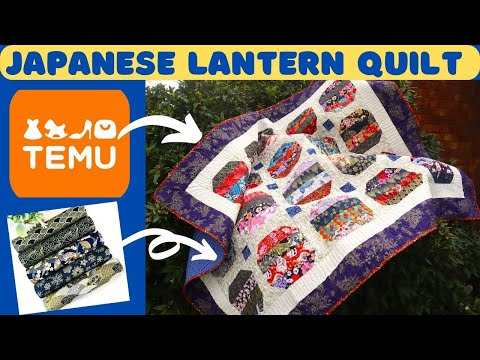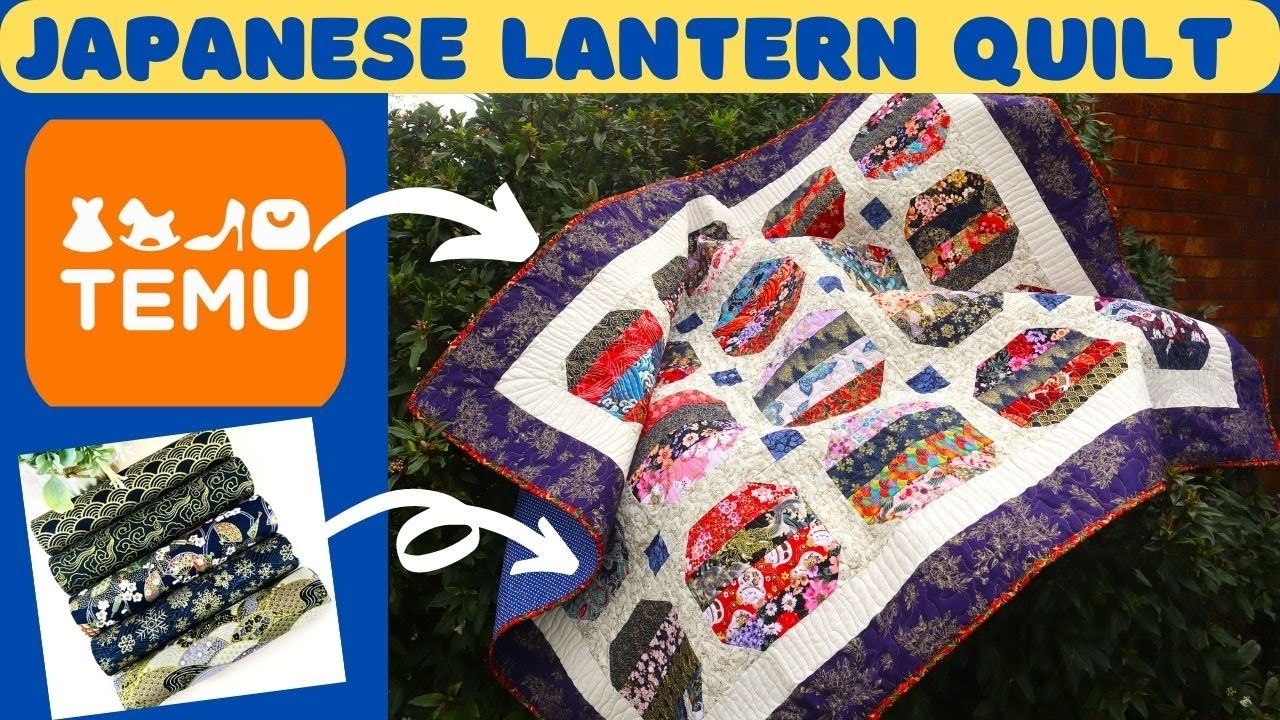Japanese quilt fabric is a captivating fusion of traditional artistry and contemporary design, weaving together centuries-old techniques with a modern aesthetic. Renowned for its meticulous craftsmanship and exquisite attention to detail, this fabric is a testament to the rich cultural heritage of Japan. Each piece is meticulously handcrafted by skilled artisans who pass down their expertise from generation to generation, ensuring the preservation of this revered tradition. The quilting process itself is a true labor of love, with intricate stitching and delicate patterns that create a visual feast for the eyes. The fabrics used are carefully selected for their superior quality and durability, ensuring that your quilt will be cherished for years to come. From vibrant floral motifs to delicate geometric patterns, each design tells a story and evokes a sense of serenity and harmony. Whether you are a seasoned quilter or a novice in the world of textiles, the allure of Japanese quilt fabric is undeniable. Its unique blend of cultural heritage and contemporary style is sure to inspire and captivate anyone who seeks to create something truly special. Immerse yourself in the beauty of Japanese quilt fabric and embark on a creative journey that celebrates tradition, craftsmanship, and the art of quilting.

JAPANESE QUILT FABRIC: A BEAUTIFUL BLEND OF TRADITION AND ARTISTRY
Quilting is an ancient art form that has been practiced for centuries across various cultures. Each region brings its unique style and techniques to this creative craft. Japanese quilt fabric is renowned worldwide for its exceptional quality, intricate designs, and deep-rooted cultural significance. Let's explore the fascinating world of Japanese quilt fabric and discover what makes it so special.
The History of Japanese Quilt Fabric
Japanese quilt fabric has a rich history that dates back to the Edo period in the 17th century. Quilting in Japan originally served a practical purpose, as it provided warmth during the cold winters. However, over time, quilting evolved into an art form, with artisans showcasing their creativity through intricate patterns and designs.
During the Meiji period in the late 19th century, Japan opened its doors to the Western world, and this cultural exchange influenced the quilting techniques in the country. Western-style quilting gained popularity, and Japanese artisans began incorporating new patterns and fabrics into their work while still retaining their traditional style.
The Aesthetics of Japanese Quilt Fabric
One of the most distinctive features of Japanese quilt fabric is its aesthetic appeal. Japanese quilt fabric often features bold and vibrant colors, intricate motifs, and delicate patterns inspired by nature. Cherry blossoms, koi fish, cranes, and geometric shapes are commonly found in these fabrics, reflecting the deep connection between the Japanese culture and the natural world.
Another unique aspect of Japanese quilt fabric is its attention to detail. The artisans meticulously hand-dye and hand-print each piece of fabric, ensuring that every design is of the highest quality. This dedication to craftsmanship gives Japanese quilt fabric a sense of authenticity and beauty that is unparalleled.
The Production Process
Creating Japanese quilt fabric is a labor-intensive process that involves several steps. It begins with the selection of the finest cotton or silk fabric, which is then pre-washed to remove any impurities. The fabric is then hand-dyed using traditional techniques such as indigo dyeing or yuzen dyeing.
Indigo dyeing is a centuries-old technique that gives the fabric a deep blue color. This dye is derived from the indigo plant and is known for its resistance to fading. Yuzen dyeing, on the other hand, involves the application of multiple colors using a resist paste, resulting in intricate and detailed designs.
Once the fabric is dyed, it undergoes a process of hand-printing called katazome. Artisans use hand-cut stencils made from mulberry paper to create repetitive patterns on the fabric. This process requires precision and skill, as even the slightest mistake can ruin the entire piece.
Contemporary Influence
While traditional Japanese quilt fabric remains highly valued, contemporary influences have also made their mark on this art form. Modern designers have started incorporating Western-inspired designs and techniques into their work, resulting in a fusion of styles.
The introduction of quilting as a popular hobby has also contributed to the growth of Japanese quilt fabric. Many enthusiasts from around the world are drawn to the unique beauty and craftsmanship of Japanese quilts, and this demand has led to the production of a wide range of fabrics to cater to different tastes and preferences.
Preserving a Cultural Legacy
The art of Japanese quilt fabric holds immense cultural significance and plays an essential role in preserving Japan's rich textile heritage. Quilting techniques and patterns are passed down through generations, ensuring that this art form continues to thrive.
Japanese quilt fabric not only serves as a medium for self-expression but also as a connection to the country's history and traditions. By appreciating and supporting Japanese quilt fabric, we contribute to the preservation of this remarkable art form for future generations to enjoy.
In conclusion, Japanese quilt fabric is a blend of tradition and artistry that captivates the hearts of quilting enthusiasts worldwide. With its rich history, stunning aesthetics, meticulous production process, and contemporary influences, it continues to be a cherished part of Japan's cultural heritage. Whether you are a quilting enthusiast or simply appreciate the beauty of textiles, Japanese quilt fabric offers a unique and captivating experience.
“Discover the Charm of Temu's Japanese Lantern Quilt with this Beginner-friendly Pattern!”
Video Source : Crafty Quilting Designs
Japanese Quilt Fabric
Japanese Quilt Fabric
| Color | Pattern | Material | Significance |
|---|---|---|---|
| Indigo Blue | Sashiko | Cotton | The indigo blue color represents tranquility and is often used in traditional Japanese quilt fabrics. Sashiko, a form of decorative stitching, is commonly seen in these fabrics, symbolizing the beauty of imperfection. |
| Cherry Blossom Pink | Sakura | Linen | Cherry blossoms hold great cultural significance in Japan, representing the fleeting beauty and transience of life. Quilt fabrics featuring cherry blossom patterns evoke a sense of elegance and grace, often used in decorative pieces or as gifts for special occasions. |
| Gold | Kinran | Silk blend | Gold is associated with wealth and prosperity in Japanese culture. Kinran, a luxurious fabric woven with gold threads, is commonly used in quilt fabrics to add a touch of opulence. These fabrics are often used for ceremonial quilts or to create striking accents in traditional designs. |
| Earth Tones | Furoshiki | Hemp | Furoshiki is a traditional Japanese wrapping cloth known for its versatility. Quilt fabrics featuring earth tones and made from hemp are commonly used in furoshiki, allowing for durable and eco-friendly wrapping solutions. These fabrics often depict natural motifs like leaves, waves, or mountains. |
| White | Kasuri | Cotton | Kasuri is a traditional Japanese fabric dyeing technique that creates intricate patterns by using resist-dyeing methods. Quilt fabrics in white, often featuring kasuri patterns, symbolize purity, simplicity, and the beauty found in minimalism. These fabrics are highly sought after for creating serene and minimalist quilt designs. |
Japanese quilt fabric is renowned for its attention to detail, cultural significance, and exquisite craftsmanship. Each color, pattern, and material used holds a unique story, capturing the essence of Japanese aesthetics and traditions. Whether you are a quilting enthusiast or simply appreciate the beauty of Japanese textiles, these fabrics add a touch of elegance and sophistication to any project.

